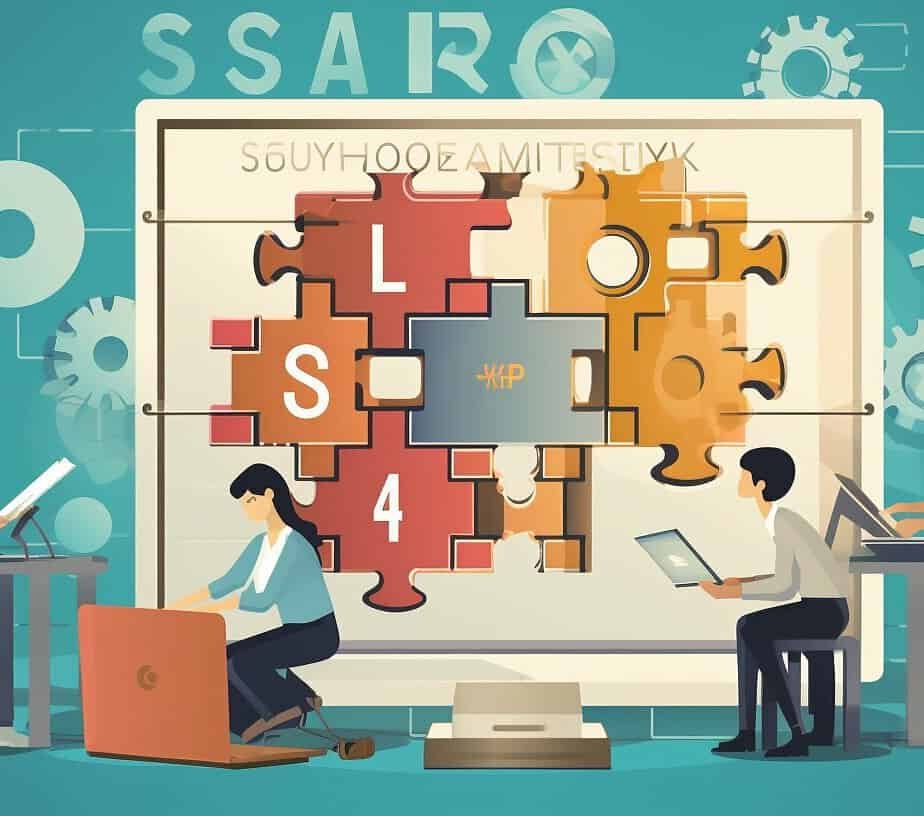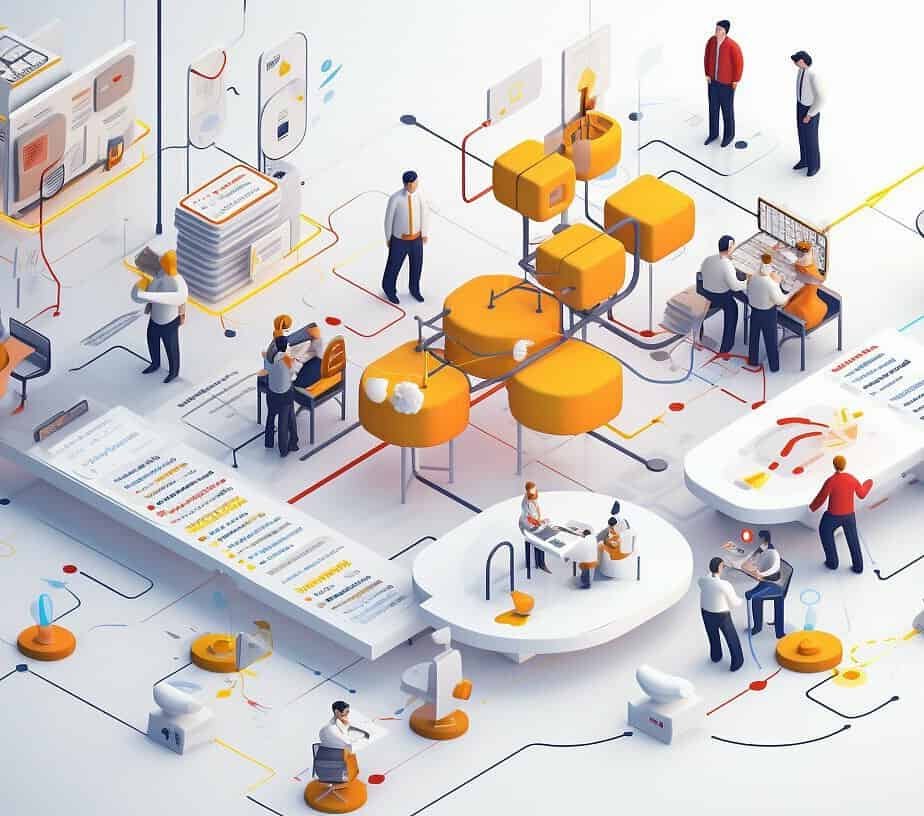In today’s fast-paced world, businesses need to stay competitive by developing efficient software solutions. Rapid Application Development (RAD) is a methodology that can help achieve this goal. RAD is a software development process that emphasizes speed, flexibility, and iterative prototyping. It can revolutionize the way software development is done, resulting in faster development, reduced costs, improved quality, and greater flexibility.
In this article, we’ll explore in detail what RAD is, how it works, its key principles, benefits, and future potential. We’ll also compare RAD with traditional software development methodologies and answer frequently asked questions about it. Whether you’re a startup or a large enterprise, RAD can help you stay ahead of the competition by unlocking efficient software solutions. Let’s dive in!
What is Rapid Application Development?
Rapid Application Development (RAD) is a software development methodology that prioritizes speed and flexibility. Unlike traditional software development methodologies, which follow a strict linear process, RAD emphasizes agile development and iterative prototyping to quickly develop software solutions that meet the needs of the end-user.
The RAD framework enables developers to create software solutions in a fraction of the time it takes to develop traditional applications. With RAD, developers can create prototypes quickly, test and refine them, and then build out the final product using an iterative, fast-paced approach.
The Benefits of Rapid Application Development
Rapid Application Development (RAD) has several benefits that make it a popular choice for software development projects. Here are some of the key advantages of using RAD:
| Benefit | Description |
|---|---|
| Faster Development | RAD emphasizes on iterative development and quick prototyping, which leads to faster delivery of the final product. |
| Reduced Costs | RAD helps in reducing development costs as it requires fewer resources and lesser time for completion of the project. |
| Improved Quality | RAD’s iterative approach ensures that the product is tested and refined throughout the development process, resulting in a higher quality end product. |
| Greater Flexibility | RAD allows for changes to be made easily during the development process, making the end product more flexible and adaptable to changing business needs. |
RAD can help businesses stay competitive in today’s fast-paced software development industry, especially when time-to-market is a priority. With its emphasis on iterative development, RAD allows for faster delivery of a minimum viable product (MVP), which can be further developed and refined over time.
The Benefits of Rapid Application Development for Startups
Startups can greatly benefit from using RAD for their product development. RAD’s faster development cycles, reduced costs, and greater flexibility can help startups quickly iterate and improve their products, while also reducing the risk of failure due to market changes or shifts in business strategy. Many successful startups, such as Dropbox and Airbnb, have used RAD methodologies to get their products to market quickly and stay ahead of the competition.
How Does RAD Work?
Rapid Application Development (RAD) is a framework that enables software developers to quickly build and deploy applications. RAD allows developers to create software in a fast and efficient manner by using pre-built components and modules. The framework is highly customizable and can be easily tailored to the specific needs of each project.
The RAD process involves several stages, which include planning, designing, testing, and deployment. During the planning phase, developers work closely with stakeholders to identify the requirements of the project. The design phase involves creating a prototype of the application, which is then tested for usability and functionality. The testing phase involves debugging and fine-tuning the application, while the deployment phase involves rolling out the app to end-users.
RAD Tools
RAD tools are software programs that aid in the development of applications using the RAD methodology. These tools allow developers to create software quickly and efficiently, often with minimal coding required. Some popular RAD tools include:
| Tool Name | Description |
|---|---|
| Microsoft PowerApps | A low-code platform that allows developers to build custom web and mobile apps quickly and easily. |
| OutSystems | A low-code platform that allows developers to build and deploy enterprise-grade applications quickly and easily. |
| Mendix | A low-code platform that allows developers to build and deploy custom applications without writing code. |
Benefits of RAD Tools
RAD tools offer several benefits to developers, including reduced development time, increased productivity, and improved quality. By using pre-built components and modules, developers can save time and focus on more critical aspects of the application. RAD tools also provide greater flexibility, allowing developers to make changes quickly and easily. Additionally, RAD tools can help improve the quality of the application by facilitating collaboration and communication among team members.
Key Principles of RAD
The key principles of Rapid Application Development (RAD) are what distinguish it from traditional software development methodologies. These principles emphasize flexibility, agility, and iteration, helping developers and businesses to achieve their end goals quickly and efficiently.
Agile Development
Agile development lies at the heart of RAD. This principle involves breaking down a project into smaller, more manageable stages, each of which is developed and tested on its own. This approach allows developers to quickly identify and correct any issues or problems that arise, ensuring that the final product is of high quality and meets the desired specifications.
Prototyping
Prototyping is another key principle of RAD. This involves developing a basic working prototype of the final product early on in the development process. Users can then interact with the prototype, providing feedback on its functionality and identifying any potential issues. This feedback is then used to refine and improve the prototype until it meets the desired specifications.
Iterative Development
Iterative development involves continually testing and refining the software throughout the development process, rather than waiting until the end to identify issues. This principle ensures that the final product is of high quality and meets the desired specifications.
Together, these three principles form the foundation of RAD, allowing developers and businesses to achieve their goals quickly and efficiently. By emphasizing flexibility, agility, and iteration, RAD has revolutionized the software development industry, enabling businesses to stay competitive in today’s fast-paced digital economy.
The RAD Process
The Rapid Application Development (RAD) process is typically broken down into various stages that are designed to achieve efficient software development and high-quality end products. Here are the key steps in the RAD process:
| Stage | Description |
|---|---|
| Requirements Planning | Identifying the software requirements and developing a plan of action. |
| User Design | Creating the user interface, ensuring it is simple, clean, and intuitive for users. |
| Rapid Construction | Developing the software quickly and efficiently, using RAD tools to build prototypes and iterate through the development process. |
| Testing and Deployment | Testing the software thoroughly to ensure it meets all requirements and deploying it to end-users. |
One of the key benefits of the RAD process is its flexibility. Each stage can be customized to suit the specific needs of the project, with developers able to move back and forth between stages as necessary.
The Agile Approach
The RAD process is built on the agile approach to development, which emphasizes collaboration, flexibility, and continuous improvement. This means that developers work closely with clients and end-users throughout the development process to ensure the software meets their needs and requirements.
Benefits of RAD for Startups
Startups face a unique set of challenges when it comes to software development. They need to move fast, stay lean, and pivot quickly in response to changing market conditions.
Rapid Application Development (RAD) is a software development methodology that can help startups overcome these challenges. Here are some of the key benefits of RAD for startups:
| Benefit | Description |
|---|---|
| Faster time-to-market | Startups need to get their products to market quickly in order to gain traction and attract investors. RAD allows developers to create and release software faster than traditional development methodologies. |
| Reduced costs | Startups often have limited budgets and need to prioritize their spending. RAD can help reduce costs by eliminating unnecessary features and streamlining the development process. |
| Greater flexibility | Startups need to be able to adapt quickly to changing market conditions and customer needs. RAD allows developers to make changes to the software quickly and easily. |
Successful startups such as Airbnb, Uber, and Dropbox have all used RAD methodologies to develop their software products. By leveraging RAD, startups can stay competitive in today’s fast-paced business environment and achieve their goals more efficiently.
The Future of RAD
Rapid Application Development has already revolutionized the software development industry, providing businesses with faster, more efficient solutions. But what does the future hold for RAD?
One emerging trend is the use of low-code development platforms, which allow developers to build software quickly and easily without needing extensive coding knowledge. This approach could further streamline the RAD process and make it more accessible to businesses of all sizes.
Another trend is the use of machine learning and artificial intelligence in the development process. These technologies can help developers to identify key areas for improvement and suggest solutions, speeding up the development process even further.
Finally, we can expect to see increased use of RAD methodologies in sectors beyond software development. From healthcare to finance to manufacturing, businesses are looking for ways to develop solutions more quickly and efficiently, and RAD could be the answer.
Advantages of RAD for Large Enterprises
Large enterprises can benefit greatly from Rapid Application Development (RAD) methodologies in their software development process. Here are some advantages of RAD for large enterprises:
| Advantage | Description |
|---|---|
| Greater Speed | RAD allows for faster development cycles, which can help large enterprises stay competitive in today’s fast-paced software development industry. With RAD, large enterprises can launch new products and services quickly and efficiently. |
| Improved Quality | RAD’s iterative development process allows for continuous feedback and testing. This results in higher quality software products that meet the specific needs of the enterprise. |
| Greater Flexibility | RAD’s agile development principles allow for greater flexibility and adaptability to changing business needs. This means large enterprises can respond quickly to market changes and stay ahead of the competition. |
Large enterprises can proactively use RAD to enhance their software development process, improve product quality, and increase efficiency in a rapidly changing business environment.
RAD vs. Traditional Software Development
Rapid Application Development (RAD) and Traditional Software Development are two different methodologies for developing software. The main difference between the two is the approach towards development. Traditional Software Development is a linear process that follows a set of sequential steps, whereas RAD is an iterative and flexible approach.
The table below compares the two methodologies with respect to some key factors:
| Factors | Traditional Software Development | Rapid Application Development |
|---|---|---|
| Development Time | Longer development times due to sequential process | Shorter development times due to iterative process |
| Costs | Higher due to longer development times and potential additional costs for changes made later in the process | Lower due to shorter development times and potential for changes to be made throughout the process |
| Flexibility | Less flexible due to rigid sequential process | More flexible due to iterative process and ability to make changes throughout the process |
| Documentation | Extensive documentation is required | Documentation is minimal due to iterative process |
| Risk | Higher risk due to longer development times and potential for changes later in the process | Lower risk due to shorter development times and ability to make changes throughout the process |
Overall, RAD offers a more efficient and flexible approach to software development than Traditional Software Development. RAD’s iterative process encourages collaboration and allows for changes to be made throughout the process, resulting in a faster time-to-market and potentially lower costs. However, Traditional Software Development may be more suitable for projects with specific requirements or where extensive documentation is required.
How Does Codeless Development Revolutionize Rapid Application Development (RAD)?
Codeless development is revolutionizing web and app creation with its ability to streamline the process of rapid application development (RAD). By eliminating the need for traditional coding, this innovative approach empowers individuals without programming experience to create functional applications quickly. With drag-and-drop interfaces and pre-built templates, codeless development opens up new possibilities for users to bring their ideas to life efficiently and effortlessly.
Section 11: Frequently Asked Questions (FAQs)
What is Rapid Application Development?
Rapid Application Development (RAD) is a software development methodology that emphasizes iterative development, prototyping, and agile project management. The goal of RAD is to deliver software solutions quickly and efficiently, without sacrificing quality or functionality.
How does RAD differ from traditional software development?
RAD differs from traditional software development methodologies in several key ways. Traditional methodologies often involve a linear, sequential process of planning, design, development, testing, and deployment, whereas RAD emphasizes iterative development and rapid prototyping. RAD also places a greater emphasis on user feedback and agile project management.
What are the benefits of using RAD?
The benefits of using RAD include faster development times, reduced costs, improved quality, and greater flexibility. By emphasizing rapid prototyping and iterative development, RAD allows developers to test and refine software solutions more quickly, leading to faster time-to-market and increased customer satisfaction.
What tools are available for RAD?
There are several RAD tools available, including low-code development platforms, rapid prototyping tools, and agile project management software. These tools can help developers streamline the development process, reduce errors, and increase collaboration among team members.
What are the key principles of RAD?
The key principles of RAD include agile development, rapid prototyping, iterative development, and user feedback. By following these principles, developers can ensure that software solutions are delivered quickly, efficiently, and with a high degree of quality.
How does the RAD process work?
The RAD process typically involves several stages, including requirements gathering, rapid prototyping, iterative development, testing, and deployment. The process can be customized to suit the specific needs of each project, but always emphasizes speed, efficiency, and quality.
What are the benefits of using RAD for startups?
Startups can benefit greatly from using RAD, as it allows them to quickly develop and test software solutions without the high costs associated with traditional development methodologies. By using RAD, startups can reduce time-to-market, increase customer satisfaction, and remain competitive in today’s fast-paced software development industry.
What is the future of RAD?
The future of RAD is likely to involve greater integration with emerging technologies such as artificial intelligence and machine learning. As software development becomes increasingly complex, RAD will continue to evolve and adapt to meet the needs of developers and businesses.
What are the advantages of using RAD for large enterprises?
Large enterprises can benefit from using RAD by reducing development times, improving quality, and increasing flexibility. By emphasizing rapid prototyping and iterative development, RAD allows enterprises to quickly respond to changing market conditions and customer needs.
How does RAD compare to traditional software development?
RAD differs from traditional software development methodologies in several key ways, including its emphasis on iterative development, rapid prototyping, and agile project management. By using RAD, developers can deliver software solutions more quickly and efficiently, without sacrificing quality or functionality.
Can I use RAD for any type of software development project?
Yes, RAD can be used for a wide variety of software development projects, including web applications, mobile apps, and enterprise software solutions. However, it is important to carefully assess the needs of each project and determine whether RAD is the best methodology for achieving the desired outcomes.




0 Comments